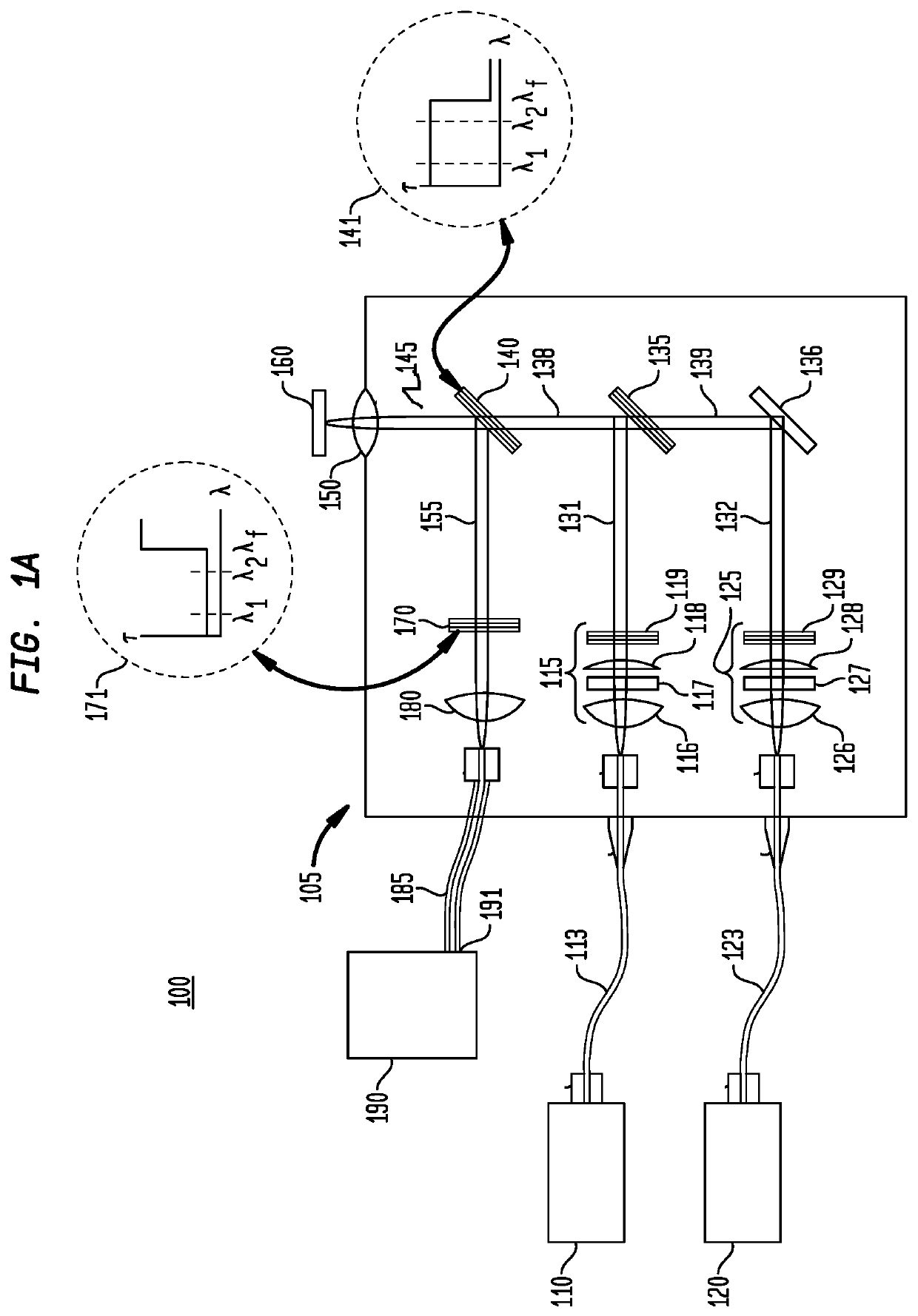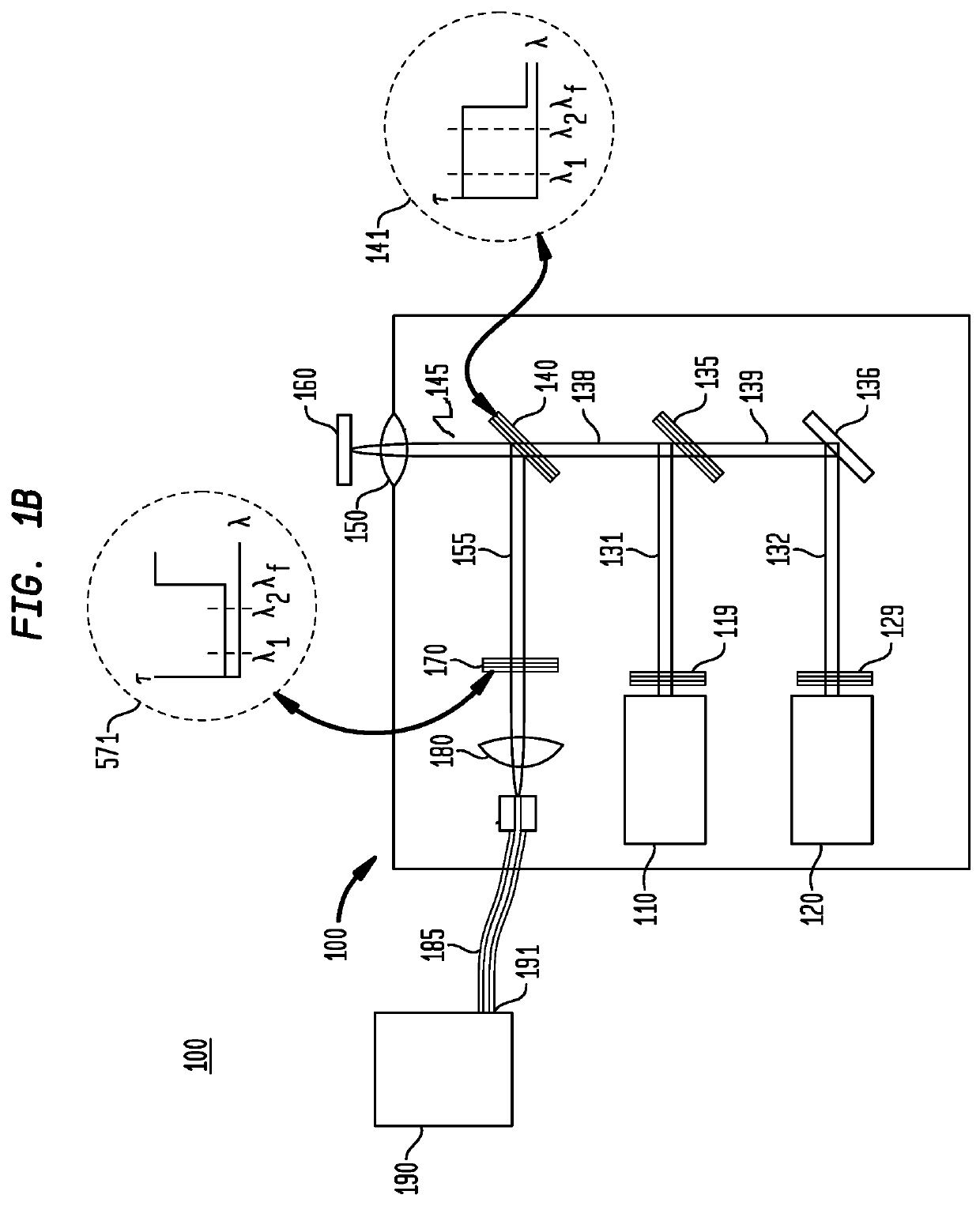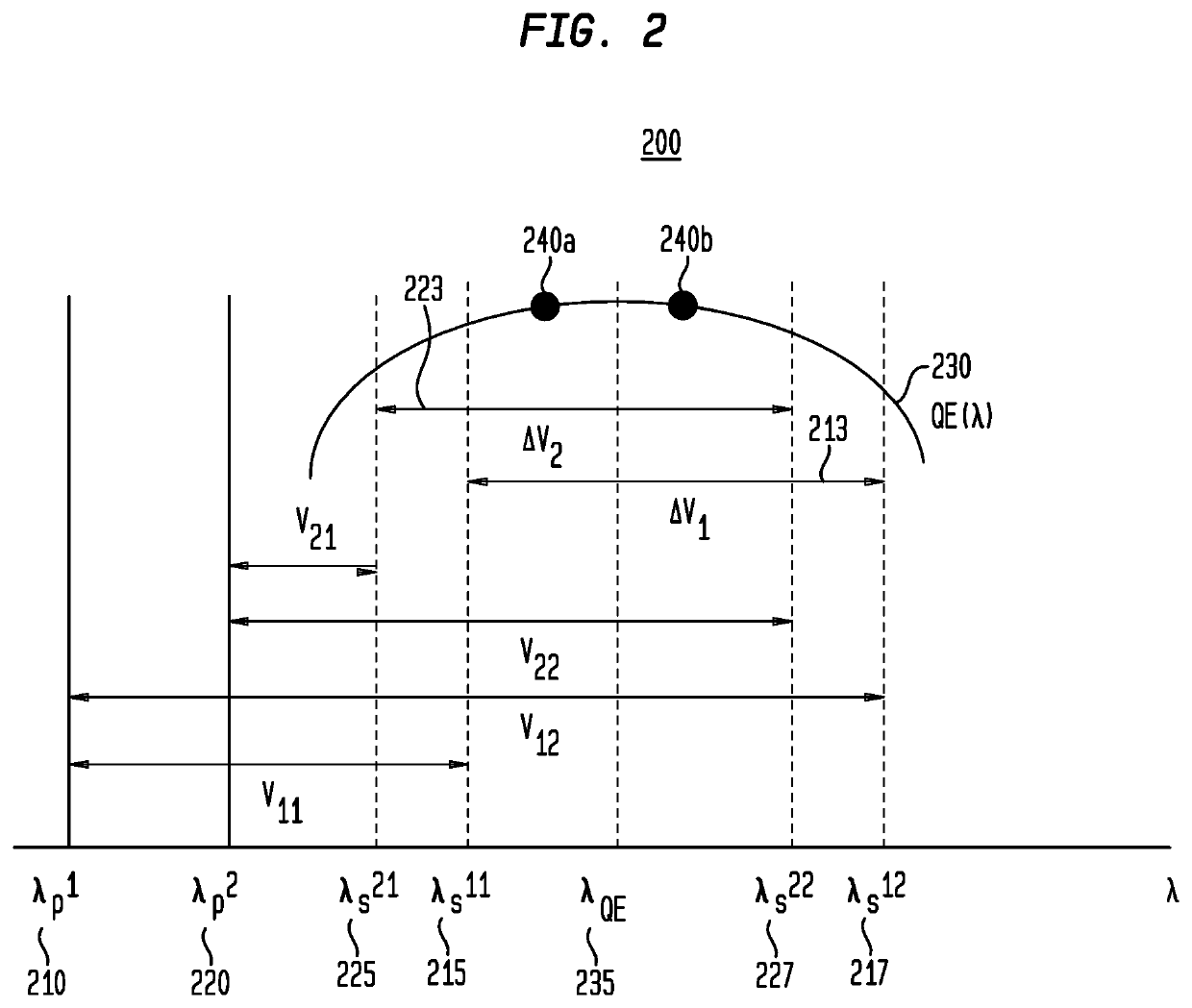Method for selection of Raman excitation wavelengths in multi-source Raman probe
a raman probe and wavelength selection technology, applied in the field of spectroscopy, can solve the problems of reducing the sensitivity of the silicon ccd detector that captures spectrometer signals, the inability to extract the latency, and the failure of references to disclose the means for selecting wavelengths used in spectral analysis, so as to enhance the performance of quantitative analysis and enhance the quantitative analysis of target materials. , the effect of enhancing the signal to noise ratio
- Summary
- Abstract
- Description
- Claims
- Application Information
AI Technical Summary
Benefits of technology
Problems solved by technology
Method used
Image
Examples
Embodiment Construction
[0046]FIG. 1A illustrates a block diagram of an exemplary embodiment of a compact dual-wavelength Raman probe as is disclosed, for example, U.S. Pat. No. 10,359,313, which discloses the use of diode lasers as the light sources in Raman spectroscopy.
[0047]In this exemplary embodiment, a dual wavelength Raman probe 100 includes a housing 105 and two external laser sources 110 and 120, coupled via optical fibers 113 and 123, respectively, to the internal optics within housing 100. The lasers 110 and 120 may emit light in a single spatial mode or in multiple spatial modes.
The laser sources 110 and 120 may be any laser device or system; preferably laser sources 110 and 120 are wavelength-stabilized laser sources having narrow bandwidth.
[0048]One class of lasers that may be used as a wavelength-stabilized laser source is an external cavity laser. See, for example, U.S. Pat. Nos. 9,059,555 and 9,577,409, which are assigned to the assignee of the instant application and whose contents are i...
PUM
 Login to View More
Login to View More Abstract
Description
Claims
Application Information
 Login to View More
Login to View More - R&D
- Intellectual Property
- Life Sciences
- Materials
- Tech Scout
- Unparalleled Data Quality
- Higher Quality Content
- 60% Fewer Hallucinations
Browse by: Latest US Patents, China's latest patents, Technical Efficacy Thesaurus, Application Domain, Technology Topic, Popular Technical Reports.
© 2025 PatSnap. All rights reserved.Legal|Privacy policy|Modern Slavery Act Transparency Statement|Sitemap|About US| Contact US: help@patsnap.com



